
Flaky Pastry Dough

This is a great recipe to have in your back pocket. I primarily use this for galettes, both savory and sweet. This recipe produces a rich, flaky dough that will make any filling taste decadent. The key to getting those flaky layers is in keeping your butter cold and not incorporating too much water. Keep your butter in the refrigerator until just before using. It’s important to work quickly here, especially if you have warm hands because you don’t want the butter to get too warm. Cold butter will become flaky layers when baked, warm butter will become absorbed into the dough.
The recipe scales up very easily; I usually double this and save a round for later. These freeze really well when wrapped tightly in plastic wrap. To use from frozen, allow it to thaw overnight in your refrigerator before rolling out.
The directions below are for making the dough by hand. You could also use a food processor to cut the butter into the dry ingredients, taking care not to cut the butter up too small. It is slightly faster but no less messy, as you will still end up bringing the dough together with your hands.
Flaky Pastry Dough
Yield: 1 round
1 ⅓ cup AP flour
pinch salt
2 tsp sugar
4 oz unsalted butter, cubed
⅓ cup cold water
Measure out all of the dry ingredients into a large bowl. Mix together with your fingers. Scatter the cubed butter over top of the dry ingredients. Gently combine the flour and butter so that the butter is coated in flour. Working quickly so as not to warm up the butter, flatten each cube of butter between your fingers. Continue on until all of the cubed butter has been flattened. If the flattened piece of butter seems overly large, break that up into another piece or two. The butter should remain very cold through this process. If it seems as though it is warming up, place the entire bowl into the refrigerator for about 20 minutes, or until the butter has rechilled.
Drizzle the water over the dough and, using your hands or a bench scraper, mix the dough roughly together. Once the water has been mixed in, turn the dough out onto a clean, lightly floured surface. At this stage the dough will still be very floury and not yet gathered into a ball. Using the palm of your hand, work the dough until it begins to come together. Add an additional Tb or two of water if needed to bring the dough together (I usually add 1 Tb at this point). Continue to work the dough, moving quickly, folding the dough over onto itself until it becomes cohesive. Shape the dough into a round (it will be much easier to roll into a circle later if you’re starting from a round shape). Wrap the dough in plastic wrap and chill until its cold, about 20 minutes.
To roll out:
Tear or cut a piece of parchment paper roughly the size of the sheet pan you plan on baking your galette on. Lightly flour the parchment, place your dough round in the middle, and lightly dust with flour. Roll your dough out into a rough circle so that it is nearly as wide as the parchment. Don’t worry about rolling it into a perfect circle – galettes are rustic by design!
Transfer the dough by picking up the parchment that you’ve rolled the dough out on and placing the whole thing on the baking sheet. Spread your filling out in the center, leaving a gap between the filling and the edge of the dough.
To fold the dough, pick up the dough along the edge and create a fold where you are slightly tucking the dough behind itself before pressing it down.
To bake:
If making a savory galette, lightly brush the dough with olive oil and sprinkle with maldon salt before baking.
If making a sweet galette, lightly brush the dough with cream and sprinkle with sugar (I prefer a larger, coarse sugar for this, such as turbinado or sugar in the raw).
Bake at 400° for 35-45 minutes, until the crust is well browned. Very carefully, using a spatula, lift a corner of the galette just enough to see if the crust has browned on the bottom. If still pale, continue baking until it’s browned. If the filling is fruit, bake until the crust is browned and the juices are bubbling.
Remove from the oven and let cool at least 10 minutes. Position a cutting board near the baking sheet. Hold the baking sheet just next to the cutting board at a slight angle, and quickly and carefully slide the parchment onto the cutting board. Then slide the parchment out from underneath, leaving the galette sitting directly on the cutting board. Slice and serve.
Variation:
Swap half of the flour out for whole wheat, rye, spelt, buckwheat, or whatever your favorite whole grain flour is.
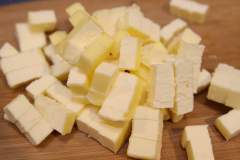
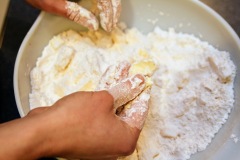
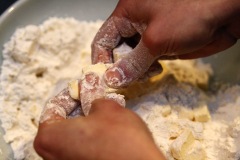
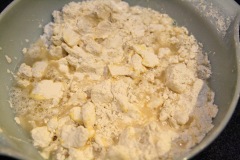
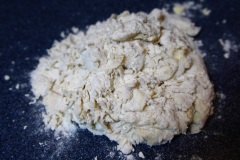
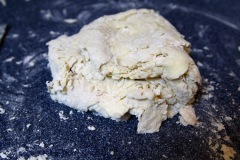
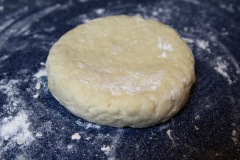
One thought on “Flaky Pastry Dough”